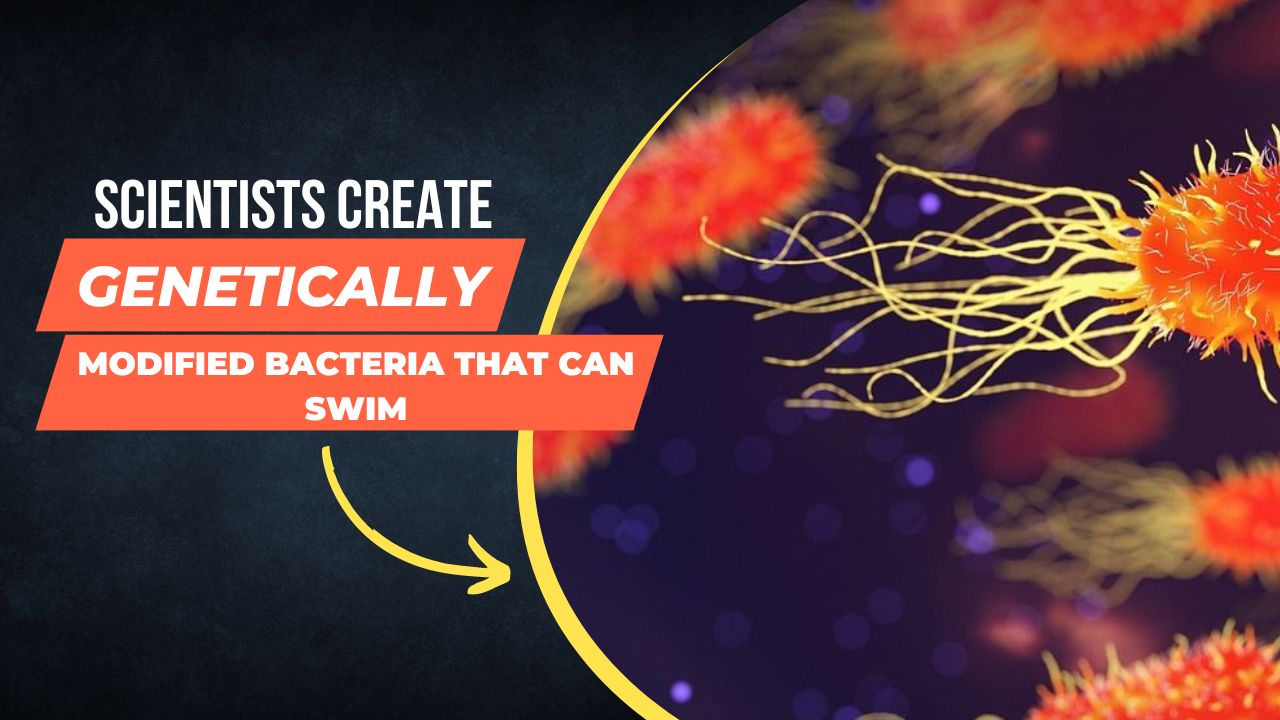If you move by yourself you are alive, the simplest way we define life. But this seemingly ordinary act of moving is yet to be fully understood scientifically. At cellular levels, how each cell derives its ability to move independently is no less than a mystery.
However, new research in which scientists created the world’s smallest moving organism provides one idea of how cell motility came to be.
Motility, the scientific term for being able to move independently, is one of the most important features of living organisms on Earth and new research tries to address this mystery.
The study, which was published in Scientific Advances on Wednesday, is the by-product of a collaboration between graduate student Hana Kiyama, from the Graduate School of Science at Osaka City University, and Professor Makoto Miyata, from the Graduate School of Science at Osaka Metropolitan University.
Osaka Metropolitan University researchers introduced seven proteins, which are believed to allow bacteria to swim by changing the direction that their helical bodies spiral, into a strain of synthetic bacterium with minimal genetic information.
As a result, they confirmed that the synthetic bacterium named syn3, which is normally spherical formed a helix that could swim by spiraling.
Further investigation showed that just two of these seven newly added proteins were enough to make syn3 capable of what can be called swimming.

This swimming synthetic bacterium is assumed to be the smallest mobile lifeform genetically, as it contains the fewest number of genes.
As the authors write in their paper, “motility is observed in various phyla and arguably one of the major determinants of survival.”
According to the paper, cell motility is believed to originate from slight movements of housekeeping proteins that are transmitted to a cell, but the proposed process hasn’t been experimentally demonstrated. Their study is thus a way to test out this theory.
In this experiment, the researchers genetically engineered a synthetic bacterium named JCVI-syn-3b, or syn-3, which doesn’t have the ability to move.
To reconstitute syn-3, the group introduced seven genes that code for proteins that are likely involved in the swimming motion of Spiroplasma bacteria.
Spiroplasma is a small bacteria known to “swim” by essentially switching around its cytoskeleton. The proteins introduced evolved from the bacterial actin protein MreB. Actins are multi-functional proteins that are often responsible for motility in cells.
In an email to Motherboard, Miyata confirmed that prior to this experiment, nobody had succeeded in making a motile minimal synthetic bacterium.
“In a previous study, we suggested that cell motilities originated evolutionarily from house-keeping systems possessing movements,” Miyata told Motherboard in an email. “We intended to show evidence by experiments. We chose the Spiroplasma system because we were also working on Spiroplasma swimming.”
By introducing the proteins responsible for motility in Spiroplasma into syn-3, the researchers could make the previously non-motile bacteria swim, as evident in a video published on the University’s YouTube account.
“We were surprised twice by swimming by seven proteins and swimming by MreB4 and MreB5 proteins,” Miyata explained. “Hana Kiyama constructed those cells and observed the discoveries. She confirmed her observations and invited people in the same room to her microscope. We all understood immediately what happened because we expected her results with moderate extents.”
The researchers also wanted to see how the expression of different combinations of the motility genes would affect the genetically engineered bacteria to swim. In doing so, they found that the expression of only two proteins was necessary for promoting motility in syn-3, likely indicating that many of the proteins were redundant and demonstrating a minimal system for motility.
“To the best of our knowledge, the motility system comprising only two actin superfamily proteins is the smallest system established to date,” the authors write. “Therefore, we may call this a ‘minimal motile cell.’”
Although this study is primarily a proof of concept, it gives scientists a better understanding of how cell motility could have potentially originated and evolved.
In addition to the sheer novelty of creating such a small swimmer, the new study sheds light on the origin of the movement in the first mobile lifeforms that arose on Earth. For instance, Miyata said that the actin protein MreB is not involved in the motility of many other bacterial species, which confirms that there are multiple different evolutionary pathways that led to a microbial movement.
“We are tracing the evolution from the ancestral MreB to swimming MreB by using the current system,” said Miyata, who added that the team is also testing out other motility systems in their synthetic creature.
It also has implications for future creations. “Studying the world’s smallest bacterium with the smallest functional motor apparatus could be used to develop movement for cell-mimicking microrobots or protein-based motors,” said Professor Miyata in a press release.



